Car design has evolved dramatically over the decades, with manufacturers continuously striving to balance aesthetics, functionality, and practicality.
However, one persistent issue that plagues many vehicle models is poorly designed trunk systems that allow water infiltration when open during rainy weather.
This seemingly minor design oversight can lead to significant inconvenience, damaged cargo, and potential long-term problems including electrical system failures, mold growth, and interior damage.
While modern vehicles incorporate sophisticated technology and innovative features, the simple challenge of keeping water out of an open trunk remains unresolved for many makes and models.
This article examines ten notoriously problematic trunk designs that regularly subject owners to unexpected showers of collected rainwater. From American muscle cars to European luxury sedans and practical Japanese family vehicles, these designs demonstrate how even the most prestigious automotive manufacturers sometimes overlook basic functional considerations in favor of style or manufacturing simplicity.
Understanding these design flaws can help potential buyers make more informed decisions and provide current owners with insights into why their vehicle storage areas become impromptu wading pools during inclement weather.
1. Chevrolet Camaro (5th Gen)
The fifth-generation Chevrolet Camaro, produced from 2010 to 2015, represents one of the most problematic trunk designs regarding water ingress when operated during or after rainfall.
This iconic American muscle car’s distinctive styling, with its aggressive rear deck and sharp body lines, unfortunately creates the perfect conditions for water collection and subsequent intrusion into the trunk area when opened.
The fundamental issue stems from the Camaro’s unique trunk configuration, which features a relatively small opening set within a wide rear deck. The design creates a pronounced channel around the perimeter of the trunk lid, where rainwater naturally collects as it flows down the vehicle’s rear window and deck lid.
Without adequate drainage pathways, this channel quickly becomes a reservoir for accumulated water during even moderate rainfall. When the trunk is opened, this collected water has nowhere to go except directly into the trunk interior.
The problem is exacerbated by the Camaro’s swept-back rear window design, which naturally channels water toward the trunk seam rather than directing it away from the opening.
Owners report significant volumes of water sometimes cups or even more pouring into the trunk when opened after rainfall, potentially damaging cargo and the vehicle’s interior components.
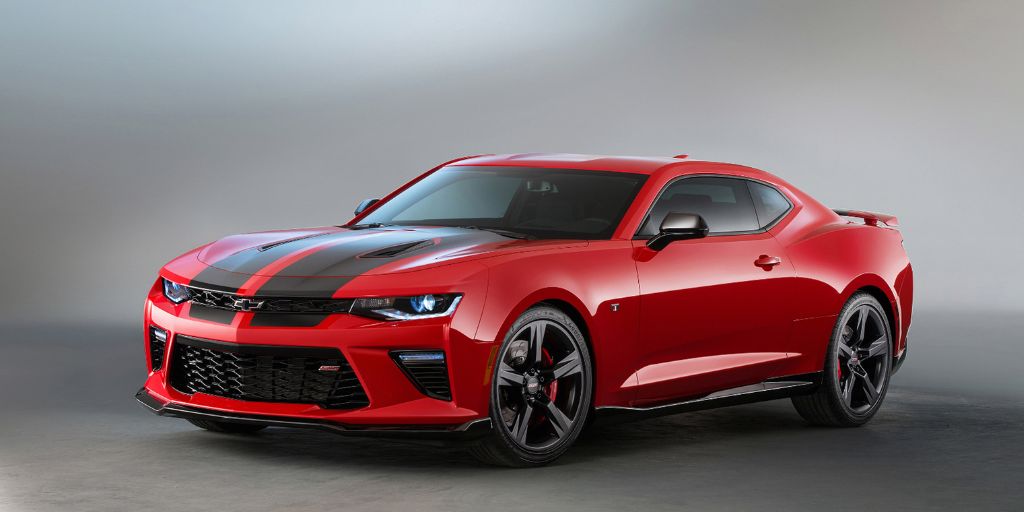
The issue becomes particularly problematic for Camaro owners in regions with frequent precipitation, as the water intrusion can lead to more than just wet belongings.
Over time, persistent moisture in the trunk area can damage the vehicle’s electrical components, promote rust development in hidden body panels, and create conditions favorable for mold and mildew growth that affects the entire cabin’s air quality.
General Motors attempted to address this issue with subtle design modifications throughout the fifth generation’s production run, including minor adjustments to the trunk seal configuration and the addition of small drainage channels in later model years.
However, these modifications proved largely insufficient to resolve the fundamental design flaw. Many owners resorted to aftermarket solutions, including specialized water diversion strips or modified opening techniques to minimize water intrusion.
What makes this design particularly frustrating is that it represents a compromise between the Camaro’s aggressive styling and basic functional considerations.
The distinctive rear profile that gives the Camaro its muscular, planted appearance directly contributes to the water management issues that plague the vehicle’s everyday usability.
This trade-off between form and function demonstrates how styling priorities sometimes overshadow practical considerations in automotive design, even in vehicles with otherwise meticulous engineering throughout.
2. Ford Mustang (2015-2017 models)
The 2015-2017 Ford Mustang models, part of the iconic pony car’s sixth generation, feature a trunk design that has become notorious among owners for its problematic water management characteristics when operated during or after rainfall.
This particular generation represented a significant styling evolution for the Mustang, incorporating more modern, sleek lines that, unfortunately, created ideal conditions for water intrusion into the trunk area.
The primary issue with these Mustang models stems from the specifically designed trunk lid and its interface with the rear deck. Ford’s designers created a distinctive profile with a slightly recessed trunk opening surrounded by a raised deck lid edge.
While visually appealing, this configuration forms a natural collection basin for rainwater as it flows down the rear window and across the deck lid. Without sufficient drainage channels directing water away from the trunk opening, this recessed area quickly accumulates water during rainfall.
When the trunk is opened after precipitation, the collected water immediately cascades into the trunk interior, often soaking cargo and potentially damaging the trunk’s carpeted lining.
The issue is particularly pronounced in the Mustang due to the relatively flat rear deck, which allows water to pool rather than naturally drain away. Owners frequently report significant water intrusion even after light rainfall, with heavier precipitation events creating even more substantial problems.

What compounds this design flaw is the position of several important electronic components in the Mustang’s trunk area. Various models in this generation feature amplifiers, subwoofers, and other electronic equipment mounted in the trunk space as part of optional premium sound systems.
These components are potentially vulnerable to water damage from repeated exposure to the intrusion resulting from the design oversight. Ford implemented minor revisions to the trunk seal design in later production runs, but these modifications proved insufficient to fully address the issue.
Many owners developed workarounds such as carefully wiping down the trunk perimeter before opening or installing aftermarket water diversion accessories specifically designed to address this known problem.
The 2015-2017 Mustang’s trunk design illustrates a common tension in automotive design between styling objectives and practical functionality. The sleek, contemporary profile that helped redefine the Mustang’s aesthetic for a new generation unfortunately came with a significant compromise in everyday usability during wet conditions.
This trade-off demonstrates how even well-established manufacturers with extensive engineering resources can overlook basic functional considerations when pursuing distinctive styling elements in highly competitive market segments.
3. Dodge Charger
The Dodge Charger, particularly models produced during the mid-to-late 2000s and early 2010s, features a trunk design that has proven problematic for water management when operated during or after rainfall.
This popular American performance sedan combines aggressive styling with practical four-door functionality, but unfortunately, it incorporates trunk engineering that creates significant challenges regarding water intrusion.
The fundamental issue with the Charger’s trunk design stems from its relatively flat rear deck and the specific configuration of the trunk lid interface.
The trunk opening is surrounded by a slight depression that lacks adequate drainage channels or pathways to direct water away from the opening.
When rain falls on the vehicle, water naturally flows down the rear window and across the deck lid, collecting in this recessed area around the trunk perimeter.
When the trunk is opened after rainfall, this accumulated water immediately flows into the vehicle’s cargo area, potentially damaging personal belongings, groceries, or electronic equipment stored within.
The problem is exacerbated by the Charger’s wide trunk opening, which creates an even larger collection area for rainwater and consequently allows more water to enter the vehicle when operated in wet conditions.
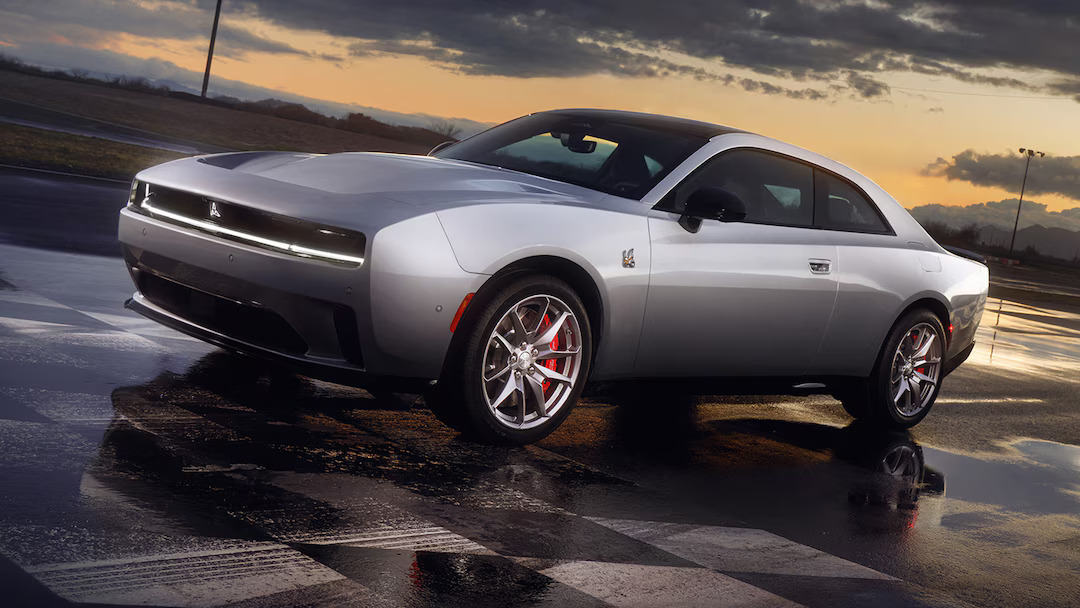
What makes this design particularly problematic is the Charger’s popularity in regions with significant precipitation. As a practical sedan often used for daily transportation and family duties, the vehicle frequently needs to be loaded and unloaded in various weather conditions.
The trunk’s water management issues represent a significant inconvenience that affects the ownership experience during routine use. FCA (now Stellantis) made minimal changes to address this issue throughout the Charger’s production run, with some subtle revisions to trunk seals and minimal drainage improvements in later model years.
However, these modifications proved largely insufficient to resolve the fundamental design flaw. Many owners resorted to various workarounds, including keeping microfiber towels specifically for drying the trunk perimeter before opening or developing special opening techniques to minimize water intrusion.
The Charger’s trunk design represents a clear example of how performance-oriented styling can sometimes compromise practical functionality. The vehicle’s aggressive, muscular rear profile contributes to its distinctive appearance but creates conditions that allow significant water intrusion during routine use.
This trade-off between aesthetic considerations and everyday practicality demonstrates the complex balancing act manufacturers face when designing vehicles that must satisfy both emotional and functional requirements for consumers.
4. BMW 3 Series (E90)
The BMW 3 Series E90 generation, produced from 2005 to 2011, features a trunk design that has become notorious among owners for its problematic water management characteristics when operated during or after rainfall.
This widely popular luxury sports sedan combined BMW’s renowned driving dynamics with practical everyday usability, but unfortunately, incorporated a trunk configuration that created significant challenges regarding water intrusion.
The fundamental issue with the E90’s trunk design stems from its sophisticated yet flawed water management system around the trunk opening. Unlike more traditional designs with visible rain gutters, BMW employed a more aesthetically pleasing hidden channel system intended to direct water away from the trunk opening.
This system features small drainage holes that are meant to channel collected water down through the body structure and away from the vehicle. However, in practical application, these drainage holes proved highly susceptible to clogging from normal environmental debris such as leaves, dirt, and pollen.
When these drainage paths become even partially obstructed, rainwater quickly backs up in the hidden channels surrounding the trunk opening. With nowhere else to go, this accumulated water immediately cascades into the trunk interior when the lid is opened after rainfall.
The problem is particularly pronounced in the E90 due to the relatively complex trunk lid geometry and seal design. The sophisticated multi-lip seals that provide excellent weather protection when the trunk is closed, unfortunately, create additional surfaces and channels where water can collect when the vehicle is exposed to precipitation.

Owners frequently report significant water intrusion even after light rainfall, with the situation becoming substantially worse as the vehicle ages and these drainage systems deteriorate further.
What makes this design particularly frustrating for owners is that it affects a vehicle positioned in the premium market segment, where expectations for thoughtful engineering and attention to detail are naturally higher.
The contradiction between the vehicle’s otherwise meticulous German engineering and this fundamental oversight in everyday functionality creates a significant disconnect in the ownership experience.
BMW implemented minor revisions to the drainage system in later production years, but these changes proved insufficient to fully resolve the issue.
The problem became so well-known that various specialized tools and cleaning procedures specifically designed to clear these drainage channels emerged in the aftermarket and among BMW enthusiast communities.
The E90 3 Series trunk design illustrates a common challenge in luxury vehicle engineering: the pursuit of clean, sophisticated aesthetics sometimes comes at the expense of straightforward functionality.
The hidden drainage system that created a sleeker exterior appearance unfortunately introduced complexity and vulnerability that a more traditional, visible rain gutter design would have avoided.
This trade-off demonstrates how even premium manufacturers sometimes prioritize styling considerations over basic practical functionality in highly competitive market segments.
Also Read: 5 SUVs With Surprisingly Deep Under Seat Storage
5. Tesla Model 3
The Tesla Model 3, introduced in 2017 and continuing through current production, represents a particularly interesting case study in problematic trunk designs regarding water management.
Despite the vehicle’s cutting-edge electric drivetrain technology and innovative approach to automotive design, it incorporates a trunk configuration that has proven surprisingly challenging when operated during or after rainfall.
The fundamental issue with the Model 3’s trunk stems from its distinctive fastback profile and the specific geometry of its trunk lid. Unlike traditional sedans with more vertical rear profiles, the Model 3 features a sleek, sloping rear design that prioritizes aerodynamic efficiency a critical factor for maximizing the vehicle’s electric range.
However, this design choice creates a natural pathway for rainwater to flow directly toward the trunk opening rather than being channeled away from it. When rain falls on the vehicle, water travels down the sloped rear glass and collects along the relatively flat edge where the trunk lid meets the body.
Tesla incorporated minimal drainage channels in this area, relying instead on the precision engineering of the trunk seal to prevent water intrusion when closed.
While effective when the trunk remains shut, this approach provides no solution for managing accumulated water when the trunk is opened. When the trunk lid is raised after rainfall, water that has collected along this seam immediately flows into the cargo area, potentially damaging personal belongings or the vehicle’s interior components.
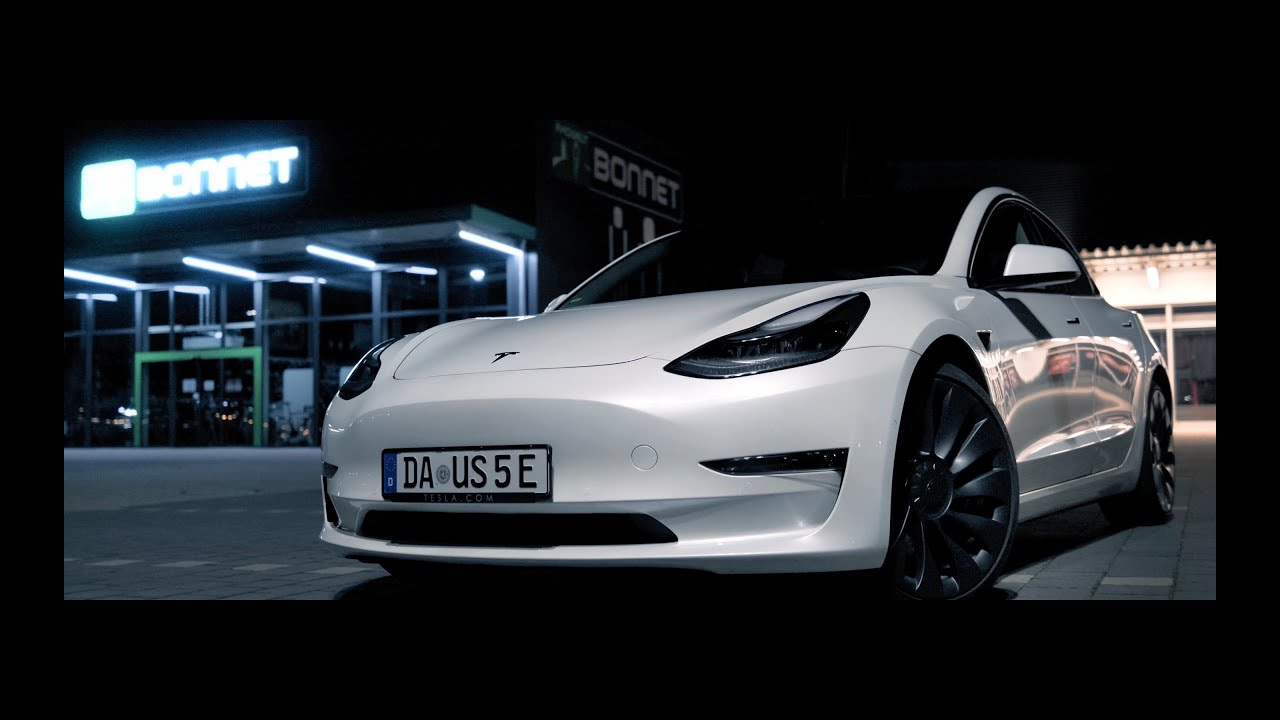
The issue is exacerbated by the Model 3’s trunk opening mechanism, which provides no intermediate position to allow water to drain before fully opening. Owners frequently report significant water intrusion even after moderate rainfall, creating an unexpected inconvenience in an otherwise technologically advanced vehicle.
What makes this design particularly noteworthy is how it illustrates that even the most forward-thinking automotive company can overlook basic functional considerations in pursuit of other design objectives.
Tesla’s prioritization of aerodynamic efficiency and clean, minimalist aesthetics has created a vehicle with excellent range and distinctive styling, but at the expense of practical water management during routine use.
Tesla has made minimal changes to address this issue throughout the Model 3’s production run, with software updates focusing primarily on the powered trunk operation rather than addressing the fundamental design challenge.
Many owners have developed workarounds, including carrying dedicated microfiber towels for drying the trunk perimeter or carefully timing their trunk access to avoid periods immediately following rainfall.
The Model 3’s trunk design demonstrates how even revolutionary approaches to automotive engineering can still struggle with solving long-established functional challenges.
While reimagining propulsion systems and interior layouts, Tesla encountered the same basic physics problem that has affected conventionally powered vehicles for decades: managing the flow of water around openings in the vehicle body.
This reality check illustrates that innovation in one area doesn’t necessarily translate to solutions for fundamental practical considerations that affect everyday usability.
6. Nissan Altima (pre-2019 models)
The Nissan Altima, particularly models produced before the 2019 redesign, features a trunk design that has become notorious among owners for its problematic water management characteristics when operated during or after rainfall.
This widely popular midsize sedan, while offering excellent value and reliability in many aspects, unfortunately incorporated a trunk configuration that created significant challenges regarding water intrusion.
The fundamental issue with the pre-2019 Altima’s trunk design stems from its relatively flat rear deck and the specific contours around the trunk opening. Nissan employed a simplified trunk perimeter design that lacks adequate dedicated channels to direct water away from the opening.
Instead, the design features a subtle depression around the trunk lid that inadvertently serves as a collection area for rainwater as it flows down the rear window and across the deck lid.
When rain falls on the vehicle, water naturally accumulates in this depression, creating a reservoir positioned directly above the trunk interior. When the trunk is opened after rainfall, this collected water immediately cascades into the cargo area, often soaking items stored within and potentially damaging the trunk’s carpeted lining.
The problem is particularly pronounced following heavy rainfall or when the vehicle has been parked for extended periods during precipitation events.
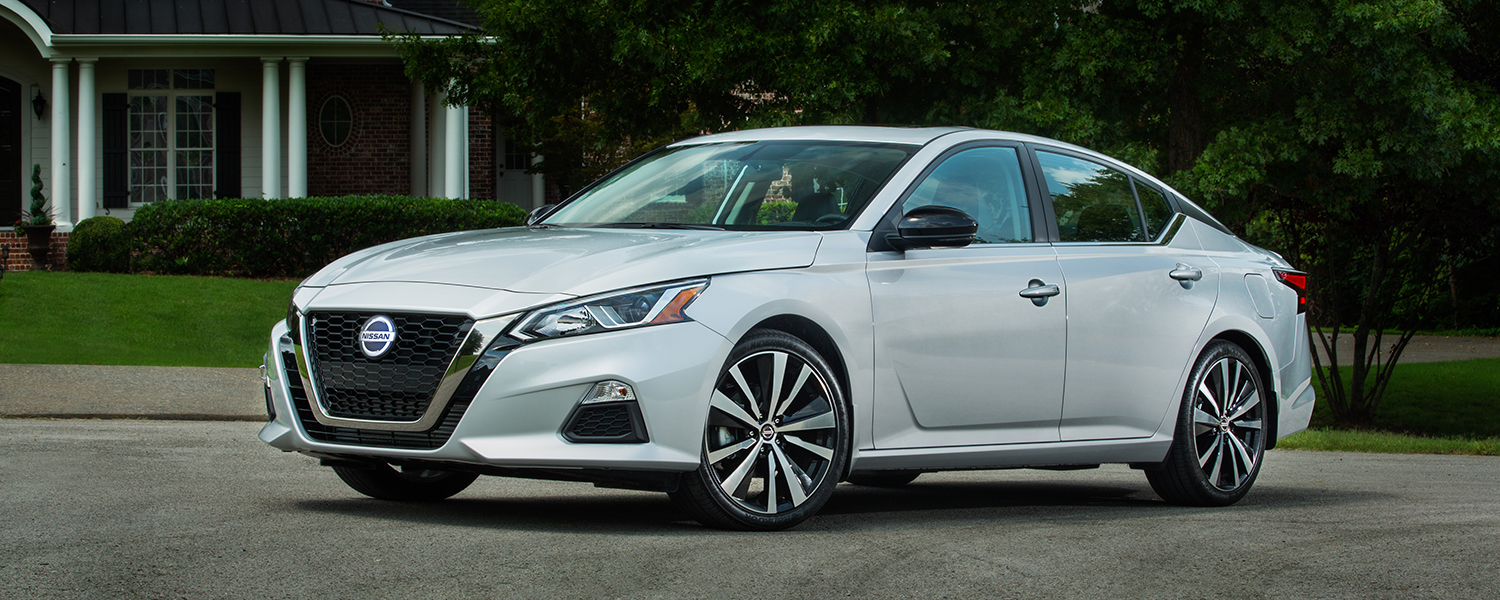
What makes this design especially frustrating for owners is that the Altima is positioned as a practical family vehicle, frequently used for grocery shopping, airport runs, and other everyday tasks that often require trunk access regardless of weather conditions.
The water intrusion issue represents a significant inconvenience that affects the ownership experience during routine use in ways that more thoughtfully designed competitors avoid.
Nissan made minimal changes to address this issue throughout the relevant generation’s production run, with some subtle revisions to trunk seals in later model years. However, these modifications proved largely insufficient to resolve the fundamental design flaw.
Many owners resorted to various workarounds, including keeping dedicated towels for drying the trunk perimeter before opening or developing special opening techniques to minimize water intrusion.
The pre-2019 Altima’s trunk design represents a clear example of how cost-optimization in high-volume mainstream vehicles can sometimes result in compromised functionality.
The simplified trunk perimeter design likely reduced manufacturing complexity and costs, but created conditions that allow significant water intrusion during routine use.
This trade-off illustrates the challenges manufacturers face when balancing production economics with everyday usability considerations in competitive market segments with tight profit margins.
Notably, Nissan substantially redesigned the trunk area for the 2019 model year and beyond, incorporating more sophisticated water management features that largely addressed these concerns in the current generation.
This evolution demonstrates the manufacturer’s awareness of the issue and willingness to implement design improvements once consumer feedback highlighted the practical limitations of the previous approach.
7. Honda Civic Coupe (8th Gen)
The 8th generation Honda Civic Coupe, produced from 2006 to 2011, features a trunk design that has proven particularly problematic for water management when operated during or after rainfall.
Unfortunately, this popular compact coupe, known for its reliability and efficient packaging, incorporated trunk engineering that creates significant challenges regarding water intrusion.
The fundamental issue with the 8th gen Civic Coupe’s trunk stems from its distinctive fastback-inspired profile and the specific configuration of the trunk lid interface.
The sleek, aerodynamic rear design is visually appealing and beneficial for fuel efficiency. It also creates a natural pathway for rainwater to flow directly toward the trunk opening.
Honda’s designers created a trunk lid that sits slightly recessed within the surrounding body panels, forming a subtle depression around the perimeter of the opening.
When rain falls on the vehicle, water naturally flows down the sloped rear window and across the deck lid, collecting in this recessed area around the trunk opening.
Without adequate drainage channels directing water away, this area quickly accumulates water during rainfall. When the trunk is opened after precipitation, this collected water immediately flows into the trunk interior, potentially damaging personal belongings or electronic components stored within.
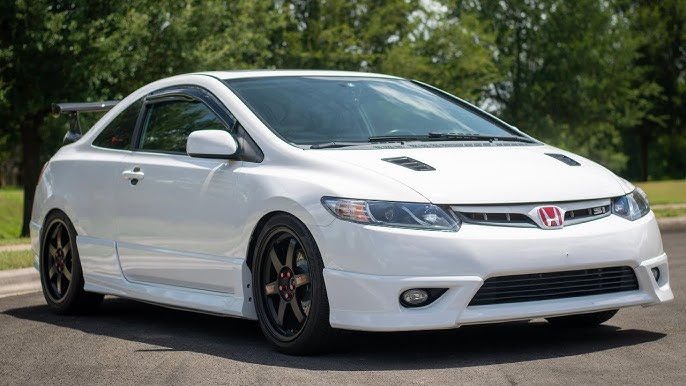
The problem is exacerbated by the Civic Coupe’s relatively compact trunk opening, which concentrates the water intrusion into a smaller area, often creating a more intense “waterfall” effect when opened after rainfall.
Owners frequently report significant water intrusion even after light rainfall, with heavier precipitation events creating substantial problems that can affect the trunk carpeting and potentially damage the spare tire well area below.
What makes this design particularly noteworthy is how it illustrates a common compromise between styling objectives and practical functionality in compact coupes. The sleek, flowing lines that give the 8th gen Civic Coupe its distinctive appearance directly contribute to the water management issues that affect everyday usability.
Honda prioritized aerodynamic efficiency and contemporary styling over optimized water drainage, creating a vehicle that excels in fuel economy and aesthetics but struggles with this fundamental practical consideration.
Honda made minimal changes to address this issue throughout the generation’s production run, with some subtle revisions to trunk seals in later model years.
However, these modifications proved insufficient to resolve the fundamental design flaw. Many owners developed workarounds such as carefully wiping down the trunk perimeter before opening or angling the vehicle when parked to encourage water to flow away from the trunk opening.
The 8th generation Civic Coupe’s trunk design represents an interesting case study in how even manufacturers renowned for practical, thoughtful engineering can sometimes overlook basic functional considerations when pursuing styling objectives.
This trade-off demonstrates the complex balancing act all automakers face when designing vehicles that must satisfy both emotional and practical requirements for consumers.
8. Volkswagen Jetta (Mk5)
The fifth-generation Volkswagen Jetta, produced from 2005 to 2011, features a trunk design that has become particularly problematic for water management when operated during or after rainfall.
This popular German compact sedan, positioned as offering European engineering at an accessible price point, unfortunately, incorporated a trunk configuration that creates significant challenges regarding water intrusion.
The fundamental issue with the Mk5 Jetta’s trunk design stems from its sophisticated yet flawed water management system around the trunk opening.
Volkswagen employed a seemingly elegant solution featuring recessed channels surrounding the trunk lid, intended to collect rainwater and direct it away from the opening through small drainage outlets. In theory, this design should effectively manage water flow while maintaining clean exterior lines without visible rain gutters.
However, in practical application, these drainage outlets proved highly susceptible to clogging from normal environmental debris such as leaves, dirt, and pollen.
When these drainage paths become even partially obstructed, a common occurrence as vehicles age, rainwater quickly backs up in the recessed channels surrounding the trunk opening. With nowhere else to go, this accumulated water immediately cascades into the trunk interior when the lid is opened after rainfall.
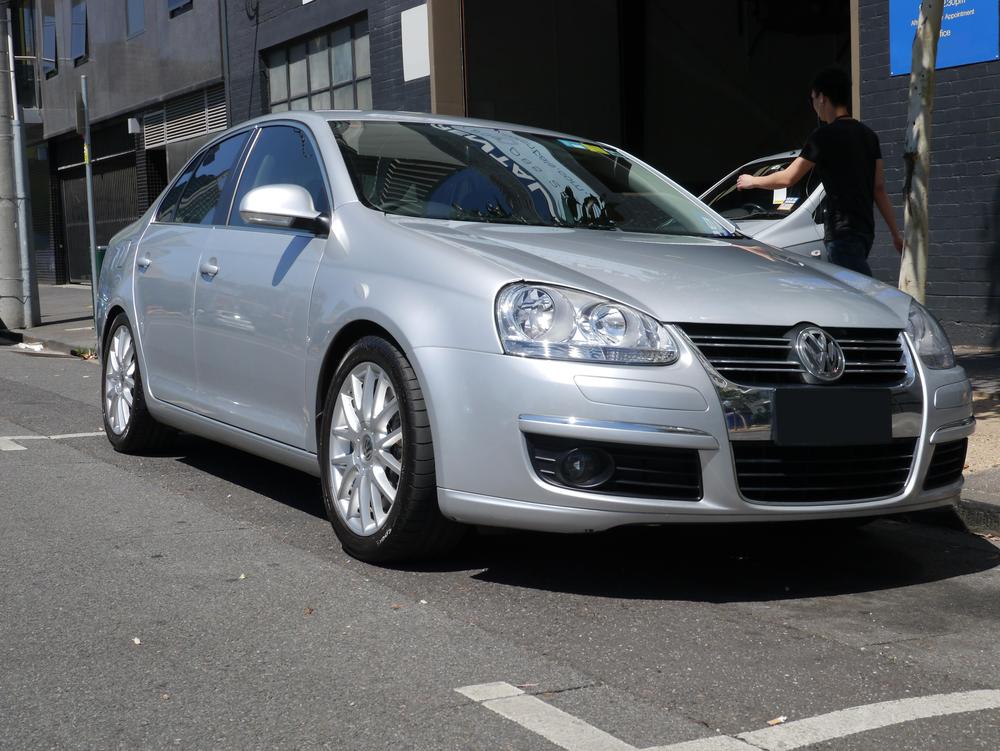
The problem is particularly pronounced in the Jetta due to the relatively complex trunk lid geometry and the specific positioning of the drainage outlets at the lowest points of these channels.
Owners frequently report significant water intrusion even after moderate rainfall, with the situation becoming substantially worse as the vehicle ages and these drainage systems deteriorate or become blocked.
What makes this design especially frustrating for owners is that the water intrusion often affects not just the main trunk floor but also flows into the spare tire well and side compartments, potentially damaging stored items and creating conditions favorable for rust development in hidden body panels.
Over time, persistent moisture can also lead to mold and mildew issues that affect the entire cabin’s air quality. Volkswagen made minimal revisions to the drainage system in later production years, but these changes proved insufficient to fully resolve the issue.
The problem became so well-known that various specialized cleaning procedures specifically targeting these drainage channels emerged among Volkswagen enthusiast communities and independent repair shops.
Regular maintenance of these drainage paths became an unofficial but necessary service item for many Jetta owners. The Mk5 Jetta’s trunk design illustrates a common challenge in automotive engineering: sophisticated solutions to straightforward problems often introduce complexity and vulnerability that simpler approaches might avoid.
The hidden drainage system that created a cleaner exterior appearance, unfortunately, introduced failure points that a more traditional, visible rain gutter design would have minimized.
This trade-off demonstrates how engineering complexity sometimes undermines basic functional requirements, particularly in vehicles designed to balance premium aspirations with mainstream pricing.
9. Mazda6 (pre-2014 models)
The Mazda6 models produced before the 2014 redesign feature a trunk design that has proven particularly problematic for water management when operated during or after rainfall.
Unfortunately, this popular midsize sedan, known for its engaging driving dynamics and stylish design, incorporates trunk engineering that creates significant challenges regarding water intrusion.
The fundamental issue with the pre-2014 Mazda6’s trunk stems from its distinctive rear styling and the specific configuration of the trunk lid interface with the body.
Mazda’s designers created a trunk opening with relatively minimal overhangs or protective channels, instead relying on subtle surface contours to direct water away from the opening.
While aesthetically clean and contributing to the vehicle’s sporty appearance, this approach proved insufficient for effective water management during actual precipitation events.
When rain falls on the vehicle, water naturally flows down the rear window and across the deck lid, with insufficient pathways to channel it away from the trunk opening.
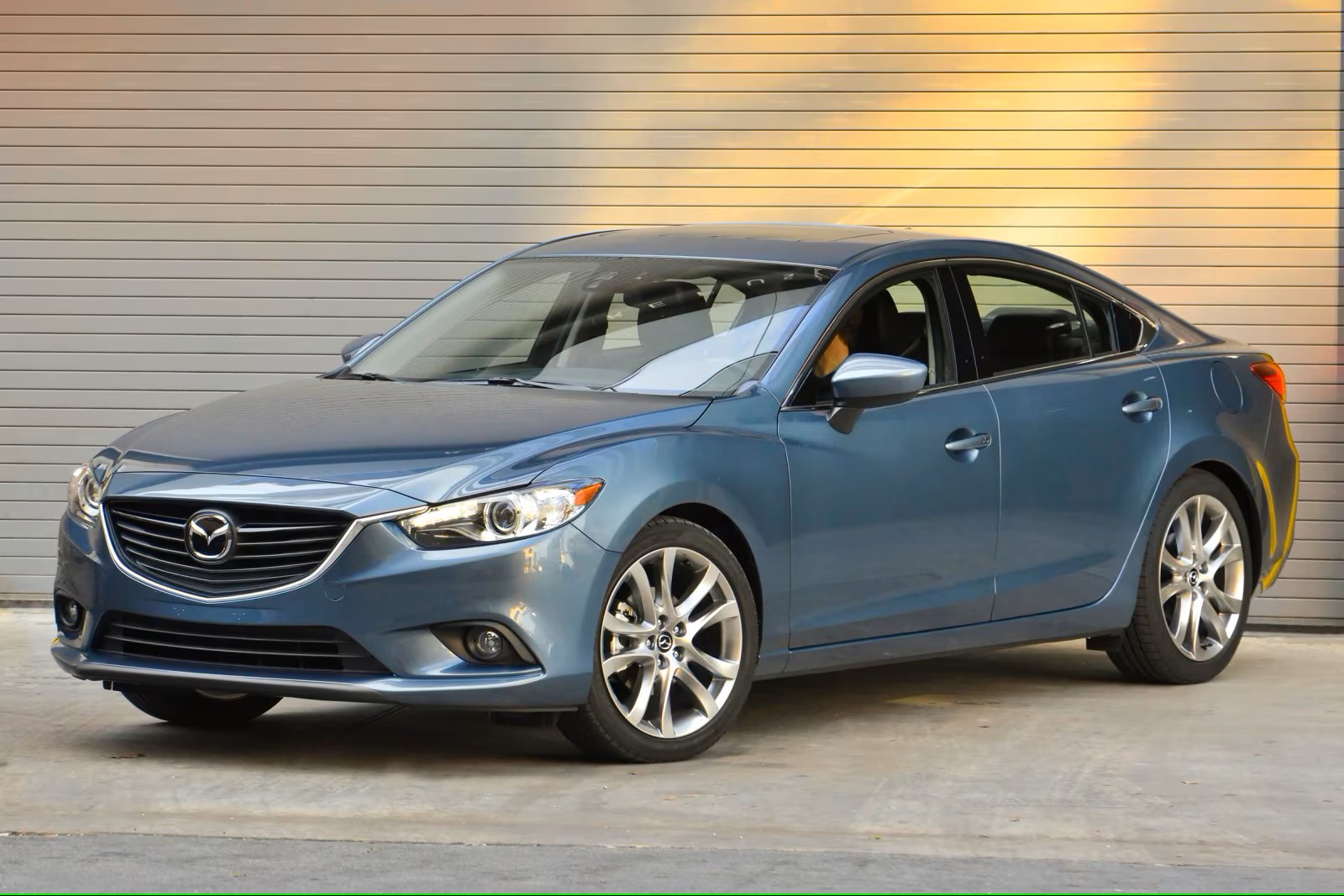
Instead, water collects along the seam where the trunk lid meets the body, precisely the area that becomes exposed when the trunk is opened. When the trunk is accessed after rainfall, this accumulated water immediately flows into the cargo area, potentially damaging personal belongings or the vehicle’s interior components.
The problem is exacerbated by the Mazda6’s relatively wide trunk opening, which creates an even larger collection area for rainwater and consequently allows more water to enter the vehicle when operated in wet conditions.
Owners frequently report significant water intrusion even after light rainfall, with heavier precipitation events creating substantial problems that can affect the trunk carpeting and potentially damage items stored within.
What makes this design particularly noteworthy is how it contrasts with Mazda’s otherwise careful attention to functional details throughout the vehicle. The company’s “Zoom-Zoom” philosophy emphasized driver engagement and thoughtful engineering, yet this basic practical consideration received insufficient attention during the design process.
This oversight is especially surprising given the vehicle’s positioning in regions with significant seasonal rainfall, including Mazda’s important North American and European markets.
Mazda made minimal changes to address this issue throughout the relevant generation’s production run, with some subtle revisions to trunk seals in later model years.
However, these modifications proved largely insufficient to resolve the fundamental design flaw. Many owners developed workarounds such as carefully timing trunk access to avoid periods immediately following rainfall or carrying microfiber towels specifically for drying the trunk perimeter before opening.
The pre-2014 Mazda6’s trunk design represents an interesting case study in how even manufacturers known for thoughtful engineering can sometimes overlook basic functional considerations when pursuing styling objectives.
This trade-off demonstrates the complex balancing act all automakers face when designing vehicles that must satisfy both emotional and practical requirements for consumers.
Notably, Mazda substantially redesigned the trunk area for the 2014 model year and beyond, incorporating more sophisticated water management features that largely addressed these concerns in the current generation.
This evolution demonstrates the manufacturer’s awareness of the issue and willingness to implement design improvements once consumer feedback highlighted the practical limitations of the previous approach.
10. Hyundai Elantra (older models)
The Hyundai Elantra, particularly models produced before the 2011 redesign, features a trunk design that has proven especially problematic for water management when operated during or after rainfall.
This popular compact sedan, which established Hyundai as a serious contender in the economy car segment, unfortunately incorporated trunk engineering that creates significant challenges regarding water intrusion.
The fundamental issue with these older Elantra models stems from the simplified trunk perimeter design and its interface with the vehicle’s rear body panels.
Hyundai employed a basic trunk configuration with minimal protective features around the opening, likely as part of cost-optimization strategies common in entry-level vehicles of that era.
The trunk opening is surrounded by a subtle depression that lacks adequate drainage channels or pathways to direct water away from the opening.
When rain falls on the vehicle, water naturally flows down the rear window and across the deck lid, collecting in this recessed area around the trunk perimeter.

Without effective drainage provisions, this area quickly accumulates water during rainfall. When the trunk is opened after precipitation, this collected water immediately cascades into the trunk interior, often soaking items stored within and potentially damaging the trunk’s carpeted lining.
The problem is particularly pronounced following heavy rainfall or when the vehicle has been parked for extended periods during precipitation events.
Owners frequently report significant water intrusion that can affect not just items stored in the trunk but also the spare tire well and the rear electrical components situated in the trunk area.
Over time, persistent moisture exposure can lead to premature corrosion of body panels and potential electrical issues from water infiltration into wiring harnesses.
What makes this design particularly noteworthy is how it reflects the engineering priorities of Hyundai during this developmental period. As the company worked to establish itself in competitive global markets, focus was placed on improving reliability, interior quality, and overall value proposition areas where Hyundai made tremendous strides.
However, some fundamental practical considerations like optimized water management, received less attention during this evolution. Hyundai made minimal changes to address this issue throughout the relevant generation’s production run, with some subtle revisions to trunk seals in later model years.
However, these modifications proved largely insufficient to resolve the fundamental design flaw. Many owners resorted to various workarounds, including keeping dedicated towels for drying the trunk perimeter before opening or developing special opening techniques to minimize water intrusion.
The older Elantra models’ trunk design represents an interesting milestone in Hyundai’s developmental journey. As the company transitioned from being perceived as merely a budget alternative to becoming a legitimate competitor against established Japanese and American brands, certain practical refinements remained works in progress.
This example illustrates how automotive design evolution occurs unevenly across different aspects of vehicle engineering, with some functional considerations requiring multiple generations to fully optimize.
Notably, Hyundai substantially redesigned the trunk area for later generations, incorporating more sophisticated water management features that largely addressed these concerns in current models.
This evolution demonstrates the manufacturer’s growing attention to detail and commitment to resolving practical limitations identified through consumer feedback as the brand continued its upmarket progression.
Also Read: 10 Cars With Factory Cargo Nets That Actually Work

